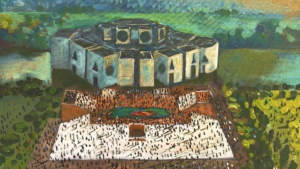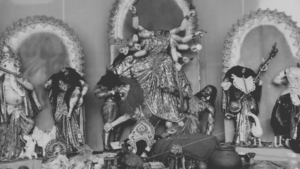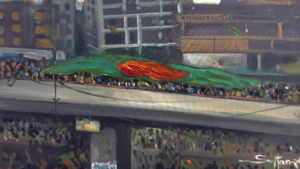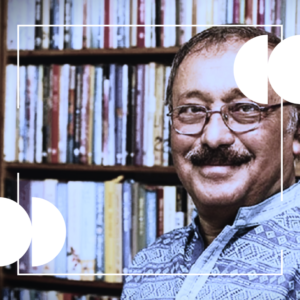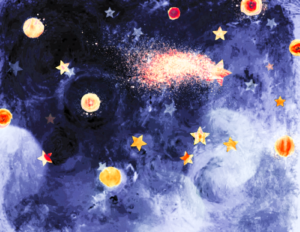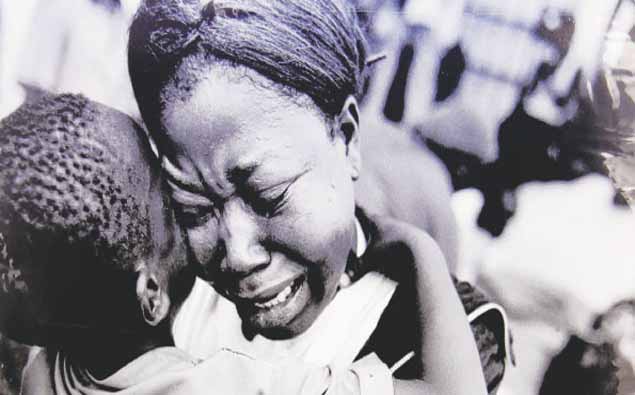
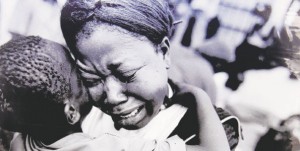
On the global centenary year of international women’s day on 8 March, while we celebrate women’s achievements in various social, political and economic platforms, we must also reflect on the reality that surrounds us. Through the interconnected global/local networks, we are exposed to violence, fear and insecurity either near us or somewhere else in the world almost every day. There are more and more vicious armed conflicts, and the nature of these conflicts has dramatically changed since early 90s. Civilians are now the deliberate targets of the ‘new’ and ‘dirty’ wars. Civilian casualties in conflicts increased from 5 per cent at the turn of the century, to 15 per cent during World War I, to 65 per cent by the end of World War II, to more than 90 per cent in the wars of the 1990s (http://www.unicef.org/graca/patterns.htm). In this write-up I focus specifically on gender-specific experiences, especially of women in conflicts, which are diverse- as victims, as survivors, as peacemakers and also as perpetrators. Many have written about women’s real and symbolic roles in a society where gender like power, also inhabits social relations, including symbols, norms, organisations, institutions and subjective identities. Here, I would like to start by asking a question- are all women and men, who advocate for women’s human rights feminists?
Women’s Activist or Feminist Activist?
For many gender activists and advocates ‘feminist’ is a politically problematic label that evokes such associations as man hater, home wrecker, colonialist, imperialist, Western influenced, national or cultural traitor, and so on – associations that they don’t like or that make their work more difficult. Regardless of how they identify themselves, feminist and women’s activists share a conceptual understanding that it is important to put women’s interests and experiences of injustice on the political agenda and to treat knowledge from women’s experiences as analytically important when addressing important political, economic, and social issues and injustices. Consequently, whether or not they are feminist, whether or not they are women, whether or not they use a rights-based approach, feminists and activists for women share a need for an integrated gender and structural analysis of political, economic, and social conditions and processes and a goal of political, economic, and social fairness. Many activists do not have as developed a critique of these processes (nor do many feminist scholars); others can give experience-based accounts of gendered racism that might help the feminist scholar who is inclined to disaggregate oppression on axes of race, class and gender (for example) to rethink her approach. All of these inform the following sections and together they illustrate the use and value of their collective view of rights as indivisible and human’s experiences as interrelated.
Women’s Vulnerability
Various discussions on women and armed conflict traced and examined the role of women in identity politics and nationalism, focusing in particular on two aspects of their experiences. First, it offered empirical evidence that women generally tend to suffer the worst kinds of human-rights abuse in nationbuilding processes; and, second, that they are, largely, either silent in or silenced by state historiography.
Women’s experiences of different kinds of political violence can range from armed international or civil war to state-sponsored or state-condoned human-rights violations against political, racial, ethnic, national or religious minorities. The Beijing Women’s Conference in 1995 stipulated that such abuse involves: ‘torture and cruel, inhumane and degrading treatment or punishment, summary or arbitrary executions, disappearances, arbitrary detentions, all forms of racism and racial discrimination, foreign occupation and alien domination, xenophobia, poverty, hunger and other denials of economic, social and cultural rights, religious intolerance, terrorism, discrimination against women and lack of the rule of law’.
It further stated that: ‘Massive violations of human rights, especially in the form of genocide, ethnic cleansing as a strategy of war and its consequences, and rape, including systematic rape of women in war situations, creating a mass exodus of refugees and displaced persons, are abhorrent practices that are strongly condemned and must be stopped immediately, while perpetrators of such crimes must be punished. Some of these situations of armed conflict have their origin in the conquest or colonization of a country by another State and the perpetuation of that colonization through state and military repression’. (www.un.org/womenwatch/daw/beijing/platform/armed.htm, para. 131).
Women’s vulnerabilities also increase with the intensity of conflicts. Domestic violence, displacement, human trafficking/smuggling are three most serious threats for women during and after conflicts. Also, communities could become highly militarised with violence permeating in the deeper levels of a society that does not go away even after a war officially ends.
Some military cultures portray the sexual abuse of women as ‘standard operating procedure’, and rape of the enemy’s women is often strategically used to terrorize the enemy population. Following the Balkan wars of the 1990s, gender specific experiences of women in conflict zones have received significant attention from many scholars and practitioners alike. Ruth Seifert in her work ‘War Rape: Analytical Approaches’ published in 1993 argues that rapes are culture- and history-specific, and that they should be analyzed based on their contexts. She suggests that rather than considering rape as an aggressive manifestation of sexuality, it must be understood as a sexual manifestation of aggression. She identified the following meanings of rape during and after wars:
• As part of the ritualized and regulated ‘games’ of wars, rape reflects the exercise of sexual and gender-specific violence;
• The abuse of women during military conflicts is an element of communication between men of two opposing communities, and the graphic expression of triumph over men who failed to protect ‘their’ women;
• Wartime rape is justified by acceptance of the notion that within a military masculine culture, following ‘rites of passage’ soldiers acquire a certain kind of eroticized masculine identity that sanctions ‘natural’ aggression towards women;
• As tactical objectives in ‘dirty wars’, women are systematically targeted with the intent to destroy the adversary’s cultural identities; and
• Feelings of hostility and hatred towards women are deeply ingrained in cultures, which are acted out as orgies of rape during extreme conditions.
Mass rapes of women have been documented in East Pakistan/Bangladesh, Cambodia, Haiti, Peru, Somalia, Uganda, Bosnia, Rwanda, Sierra Leone, Congo and Sudan for example. While women are also targeted due to religious, ethnic, racial, national and/or other political affiliations, there is a strong gender component behind deliberate acts of violence, as well. Indeed, gender is often used strategically for assaulting group identities, as well as women as women and men as men.
Recent projects on gender, sexual violence and conflicts have also made two explicit contributions to our understanding of the gendered politics of war.
‘Real Men’ and the Crisis of Masculinity
First, a new emphasis on the experiences of men and boys in conflicts suggests that ideas and practices of masculinity and femininity must also be examined in the context of militarized or sexual violence. These inputs point to the exclusion of men and boys from conflict-induced vulnerabilities and violence. The gendered process of framing women and children as ‘innocent’ civilians provides the moral justification for protection by the international humanitarian community, which currently not only excludes able-bodied men but also reproduces the gendered rhetoric of ‘vulnerable women and children’. While women and girls remain the majority of victims today, the framing of agency and victimization must go beyond the paradigm of male perpetrator and female victim. For example, in Bangladesh during 1971, men experienced forced exposure to determine whether they were circumcised, so the Pakistani army could identify and kill Bengali Hindus who unlike Muslims were not circumcised. Stories of men being shamed and ‘feminised’ by the security forces trickled in media reports on Palestine, East Timor and Sri Lanka. These humiliating and often repressed experiences produce counter memories which remain as parallel narratives in comparison with the official truths. In the end, human-rights advocates, as well as humanitarian agencies and activists on the ground, need to be responsive to various conceptualizations of masculinities, identity politics and power imbalances.
Women as Perpetrators of Violence
The second contribution has been that analyses of women – also as perpetrators of violence, both militarized and sexual – have been able to challenge the image of women as malleable and feminine. In recent years, women as militants and suicide bombers in Gaza, Chechnya and Sri Lanka have not been uncommon, while in Rwanda there were examples of women inciting rape. Likewise, ‘masculine’ and militarized women perpetrating sexually humiliating acts in Afghanistan, Iraq and the US prison in Guantánamo created global outrage when images were publicized of detainees being tortured at the Abu Ghraib prison. In this regard, women in various leadership roles, such as Indira Gandhi, Margaret Thatcher, Madeline Albright and Condoleezza Rice, must also be understood through the framework of the masculine political culture of state systems. On the other hand, the media depiction of servicewomen, such as the capture and release of Melissa Rathbun-Nealy and Major Rhonda Scott Cornum during the first Gulf War, or the manipulation of global public opinion by the US government in the case of Private Jessica Lynch in 2003 in Iraq, demonstrate that women’s role in the armed forces is still symbolized through a ‘hyper-masculine’ (Ashis Nandy, 1988) militarized culture.
Women’s Justice
While the recognition of gender crimes in international law is relatively recent, gender justice has become a strong advocacy position for women’s activists and feminists who focus on women’s experiences in war. At the height of the war in the Balkan region and in Rwanda, many have strongly advocated for gender justice, and classified rape as a war crime and a crime against humanity. Kelly Askin provided a feminist analysis of the Nuremberg and Tokyo trials, which highlighted the failure of the international community to prosecute gender-specific crimes following World War II; and of ways in which sexual violence can be prosecuted as genocide under each sub-article of the Genocide Convention. Groundbreaking feminist activism facilitated proposals on how the ICTY (the International Criminal Tribunal for the former Yugoslavia) and ICTR (the International Criminal Tribunal for Rwanda) could prosecute gender-related war crimes.
Subsequently, the Women’s International War Crimes Tribunal, convened in Tokyo in December 2000, was the first such undertaking to focus on gender-based war crimes. While the primary consideration was rape and sexual slavery by the Japanese military forces during WWII, as well as an assessment of the criminal liabilities of the Japanese state and the emperor as the then-head of state, this Tribunal also provided a wider platform by which to present the testimonies of rape survivors of other conflicts following WWII. A significant breakthrough in international gender justice was the case of Jean-Paul Akayesu, the former mayor of the Taba commune in Rwanda, who in October 1998 was sentenced to three life terms and 80 years’ imprisonment.
Also various truth and reconciliation commissions (TRCs) have documented experiences of national struggles. But women have pointed out the limitations of these platforms and introduced the analyses of silence in reconciliation processes, which rely heavily on dialogues, public hearings and speech acts. Nthabiseng Motsemme in her work ‘the Mute always speak’ suggests that women’s silences uttered at the TRC in South Africa are ‘languages of pain and grief’. While various forms of silencing coercion such as oppressive silences about sexual violence involve both physical and emotional violence, silence can also be used to communicate certain forms of resistance and can become a way for the marginalised or powerless to critique power.
Finally, various gender-sensitive legal and technical mechanisms within the United Nations have endeavoured to respond to the gendered impacts of armed conflicts. Two such mechanisms include Security Council Resolution 1325 and women’s participation in international peacekeeping missions. Following decades of activism and advocacy by women’s lobbies and NGOs, in October 2000 the UN Security Council (UNSC) adopted Resolution 1325 on women, peace and security. It affirms women’s roles in the prevention and resolution of conflicts, and also calls for special measures to protect women and girls from gender-based violence, especially rape and other forms of sexual abuse. Although this resolution asserts women’s direct participation in security matters, some have argued that it is not radical enough to be used as a transformative gender-mainstreaming tool. However, this resolution is pioneering in initiating a process that ensures women’s equal representation in security institutions and decision-making bodies. Subsequent UNSC resolutions 1889, 1820 and 1888 have contributed to gender-sensitive international mechanisms on women, peace and security.
The ‘Blue Helmet’ Women
The first example of women’s involvement in peace missions was the UN Transition Assistance Group (UNTAG), which operated in Namibia from 1989 until 1990. While there has not yet been any clear recruitment and participation strategy, the presence of women as peacekeepers or as the blue-helmet women is certainly a significant ‘gender-mainstreaming’ measure. A force of 125 female police officers from India’s Central Reserve Police Force (CRPF) is now deployed in Liberia as UN peacekeepers to assist in the nation’s recovery from years of civil war. In May 2010, for the first time, 110 members of an all-women Bangladeshi contingent of the U.N. all female Formed Police Unit (FPU) were deployed in the mission in Haiti. While peacekeeping is a new military model, it still reproduces the traditional hyper-masculine gender roles in missions.
Women’s experiences and roles in conflicts are complex and require context-specific attention. The UNSC Resolutions and the presence of women in peacekeeping forces are responsive and responsible instruments towards bringing about crucial structural changes in gender relationships. While the analyses of ‘new’ kinds of ‘dirty’ wars do encompass the victimization of boys and men, and the recent gender-sensitive mechanisms are more attentive to the complexities of the ground, women’s pain and trauma must be understood through specific cultural and historical contexts. Related to these on the ground complexities, the power and privilege of women in leadership roles, and the questions about hierarchies (in terms of age, seniority, status, rural-urban divides for example) within women’s movements must be understood and resolved through the lens of critical self-reflection.
